
Hey there, pool owners! We know how much you cherish your sparkling, crystal-clear swimming pool. It’s the center of many fun-filled parties and family gatherings. But when that once vibrant blue water turns murky green, it can feel like a total nightmare, right?
A green pool is not just an eyesore but also a breeding ground for unwanted guests like algae and bacteria. These unwelcome visitors not only spoil your fun but can also pose serious health risks. This is why maintaining the cleanliness and clarity of your pool should be high on your priority list.
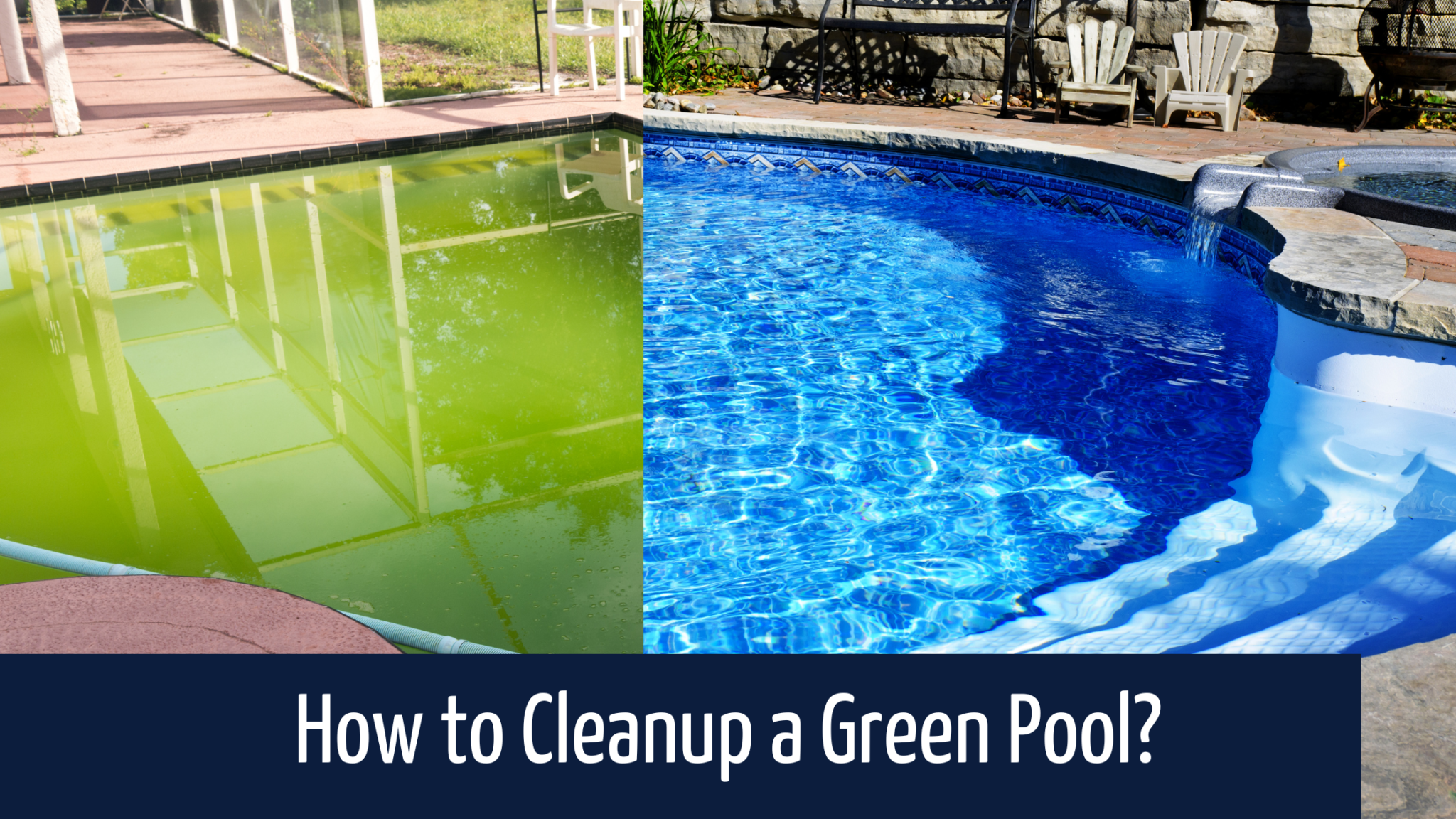
So, you’ve noticed your pool has turned green. The first step to reclaiming your pool is understanding what’s causing this. As a pool owner, it’s important to recognize the common factors that can contribute to the undesirable green appearance.
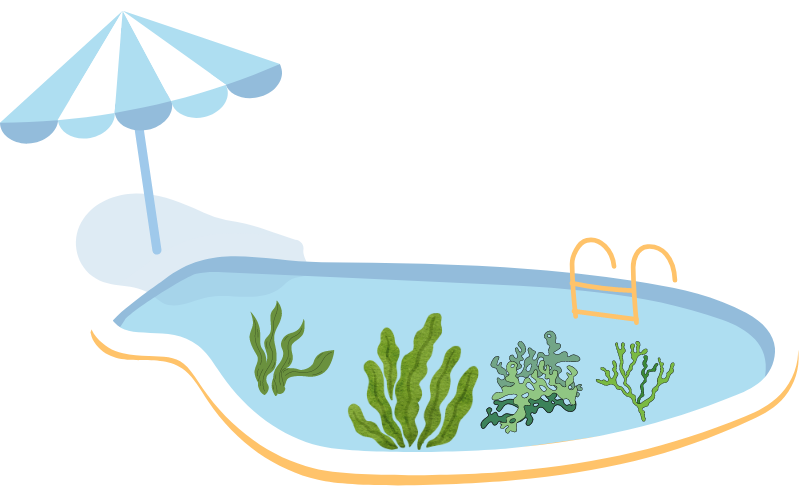
Algae growth is the most common cause of green pools. These microscopic plants thrive in warm, stagnant water, making your pool an ideal environment if your pool is not properly maintained. Algae can multiply rapidly, turning your pool into an unsightly and unhealthy green swamp.
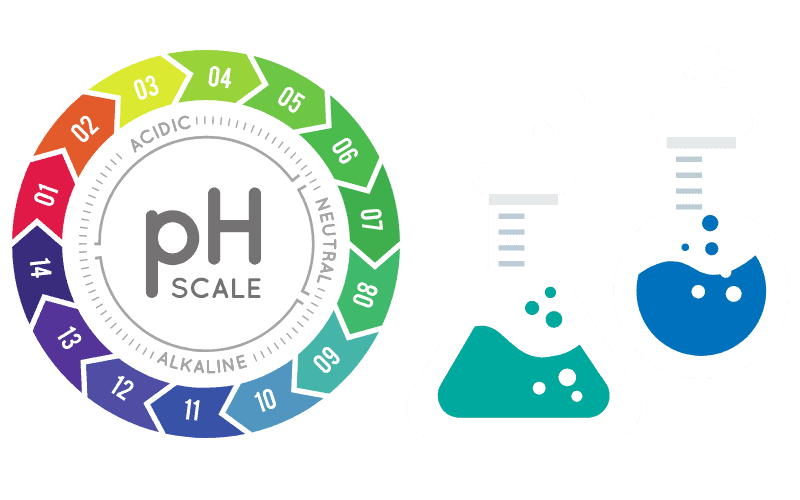
Imbalanced pool chemistry is another key factor in a green pool. Maintaining the correct levels of pH, alkalinity, and sanitizer is essential to preventing the growth of algae and other microorganisms. Failing to do so creates a hospitable environment for these unwanted guests.
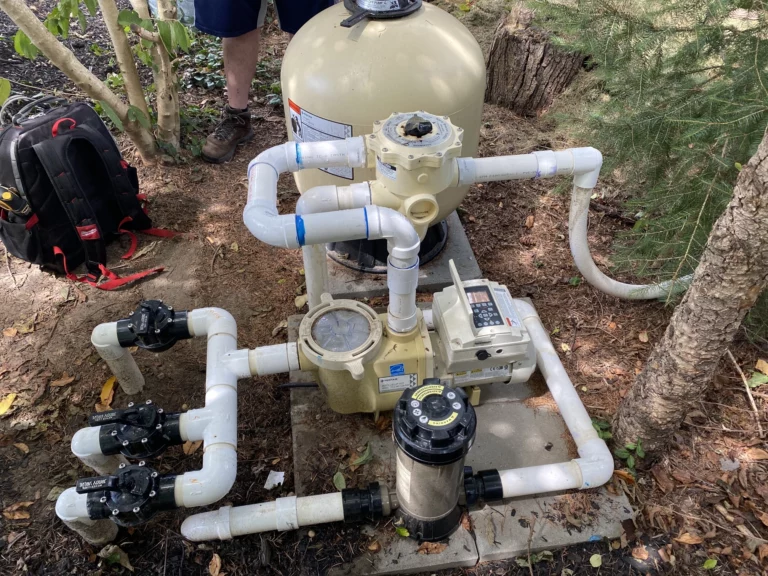
Poor filtration and circulation can contribute to a green pool. A well-functioning filter and pump system keeps your pool water clean and clear. If this system is not working efficiently, it can lead to the accumulation of contaminants and uneven distribution of sanitizing chemicals, providing a favorable environment for algae growth.
In the following sections, we will explore how to address these factors and restore your pool to its crystal-clear glory.
Before diving into the pool clean-up process, it’s essential to be well-prepared. Having the right tools at your disposal and understanding safety measures will ensure a smoother, more effective clean-up process. This preparation stage is pivotal for every pool owner ready to transform their green pool back to its original state.
Firstly, you’ll need to gather the necessary equipment. This might include pool testing kits, chemicals such as pool shock and algaecide, a pool brush, a vacuum, and possibly replacement parts for your filtration system.
Safety Precaution: Handling pool chemicals without proper knowledge can be dangerous. Always read and follow the manufacturers’ instructions, wear protective clothing when handling chemicals, and ensure that chemicals are stored safely out of reach of children and pets.
As we progress into the next section, we’ll guide you through the detailed steps of cleaning up your green pool. With the right tools and safety measures in place, you’re on your way to reclaiming your pool’s glory.
The first step is pretty straightforward but very important – removing debris. Leaves, sticks, and other gunk can be a feast for algae, aiding their growth. These foreign objects can also clog your filter system, making it less efficient.
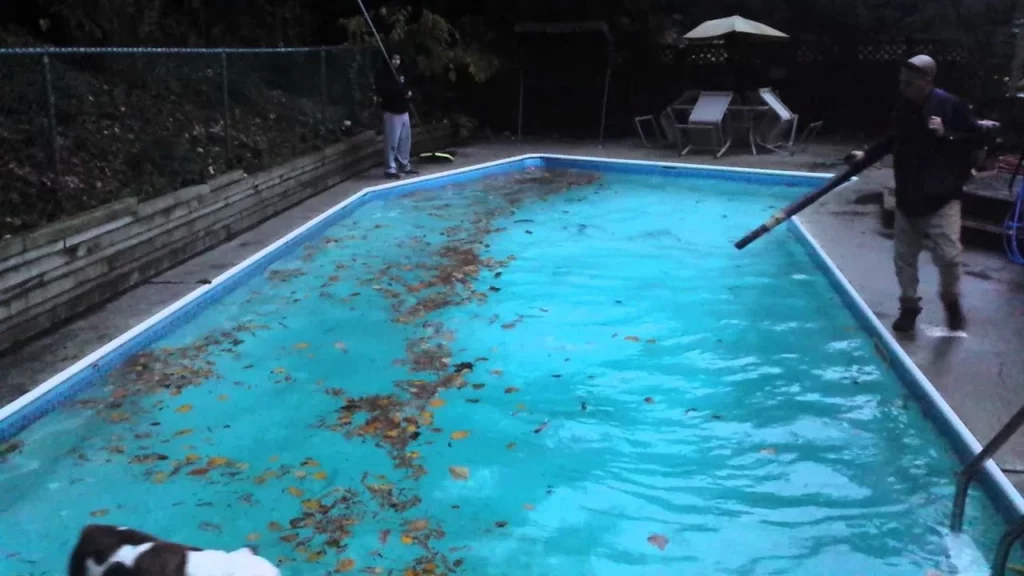
So, grab your trusty pool net and start skimming off any floating debris. Be thorough – remember, we’re going for pristine water here. And don’t forget about the stuff that’s settled at the bottom. You’ll need your pool vacuum for that.
This step is the setting stage for the rest of your pool clean-up.
Ready to move on?
Let’s dive deeper into our pool rescue mission!
Next up on our pool recovery mission is balancing the water chemistry. It can be confusing if you don’t follow the instructions correctly.
First off, it’s time to test the water parameters. Your trusty pool test kit will help here. We want to understand your pool’s pH, alkalinity, and sanitizer levels. This information will guide us on what adjustments we need to make.
Once you’ve got your readings, it’s time to adjust the pH and alkalinity as needed. Ideally, your pool’s pH should be between 7.2 and 7.6, and the total alkalinity should be between 80 and 120 parts per million. If your levels are off, you’ll need to add either pH increaser or decreaser and alkalinity increaser to your pool, following the manufacturer’s instructions on the package.
Now, for the main event – shocking your pool. Shocking involves adding a high dose of chlorine to kill off any bacteria and algae. But how much to add? Well, that depends on the severity of your green pool situation.

If your pool water is light green, you’ll need to double-shock your pool. This means adding 2 pounds of shock for every 10,000 gallons of water. If your pool water is green, you’re looking at a triple shock – 3 pounds of every 10,000 gallons.
Now, if your pool is dark green, it will take a bit more effort. You’ll need to quadruple shock it, using 4 pounds of shock for every 10,000 gallons of water.
As for brown or black pool water… Well, let’s say these pools need serious intervention. In this case, it’s recommended to add 5 pounds of shock for every 10,000 gallons of water.
Remember, safety first – wear protective gloves and eyewear when handling pool shock, and distribute it evenly across the pool’s surface, focusing on the deep end.
Alright, it’s time to let the pool shock do its work. The next section will tackle any remaining filtration and circulation issues.
Now that we’ve shocked your pool and told that algae who’s boss, it’s time to focus on another critical part of the clean-up process: addressing filtration and circulation issues.
First, we need to deal with the filter. Whether you have a sand, cartridge, or DE filter, it’s likely been working overtime to clear out all that green gunk.
If you have a sand or DE (Diatomaceous Earth) filter, consider backwashing it. It reverses the flow of water, effectively flushing out accumulated debris from the filter. For cartridge filters, a thorough cleaning of the cartridge is required.
Always adhere to the manufacturer’s instructions for these processes to ensure effectiveness and safety.
Next, we need to verify the proper circulation of your pool water. An optimally functioning pool pump and well-placed return jets ensure that water and sanitizing chemicals are evenly distributed throughout your pool, preventing stagnation and the growth of microorganisms.
It’s essential to ensure your pool pump is operating correctly and that water is moving effectively through the skimmer and return jets. If stagnant areas are detected, adjustments to the return jets or additions might be necessary to enhance circulation.
Addressing filtration and circulation issues is vital in restoring your green pool to its former clarity and vibrancy. As we move to the next stage of our comprehensive guide, we will target any lingering algae in your pool.
Your pool is on its way to recovery.
We’re nearing the end of our comprehensive guide, and by now, you have done commendable work in transforming your pool. The next stage of our process focuses on eliminating any residual algae – those stubborn organisms that may still linger in your pool.
The initial phase of algae removal involves brushing your pool thoroughly. Even though you’ve already vacuumed your pool, brushing is a necessary step. It reaches areas the vacuum may have missed, such as corners and steps.
Following brushing, a second round of vacuuming is required. This step removes any dislodged algae and debris, enhancing the cleanliness of your pool. Whether you’re using a manual or automatic pool vacuum, the goal remains consistent: eradicate as much algae and debris as possible.
The final step in algae removal involves the use of algaecide. This specialized chemical is designed to exterminate algae and prevent future growth. It’s imperative to follow the manufacturer’s instructions on how much algaecide to apply based on your pool size.
We need to focus on some post-treatment maintenance to keep your pool running smoothly.
First up, it’s time to re-test your water chemistry. After all the treatment, the chemical levels in your pool will likely have changed. We need to make sure that everything’s still balanced.
Check your pH, alkalinity, and sanitizer levels, and adjust them if needed. Regularly testing your water chemistry is key to keeping your pool crystal clear and ready for swimming.
Next, we need to keep an eye on your filtration and circulation systems. You’ve already given them a good clean, but monitoring them is important to ensure they’re working efficiently.
Remember, a healthy pool is all about maintaining balance and movement. So, keep an eye on your pump’s running time and your filter’s pressure gauge.
Also, remember to regularly clean or backwash your filter.
That’s about it, folks! By following these steps, you’ve cleaned up your green pool and equipped yourself with the knowledge to keep it sparkling.
Congratulations! You’ve successfully navigated the journey from green to clean. But as we all know, prevention is better than cure. We need to focus on consistent maintenance and best practices to avoid future green pool situations.
First and foremost, regular pool maintenance is your best defense against a green pool. This includes skimming debris, vacuuming, and brushing your pool regularly. It may sound like a lot of work, but remember, consistency is the key to a sparkling pool.
If you find it challenging to maintain a pool maintenance routine, consider opting for our weekly pool maintenance service. Our pool professionals will take care of all the headaches of pool maintenance, leaving you free to enjoy your pool with peace of mind.
Maintaining proper water chemistry is another crucial step in preventing green pools. Regular testing and adjusting of your pool’s pH, alkalinity, and sanitizer levels will keep the water balanced and algae at bay.
If you find it overwhelming, our experts are always here to help, call us at (631) 527-3634, and we’ll take care of everything.
You’ve just navigated through the comprehensive guide on tackling the daunting task of cleaning a green pool.
Remember, regular and diligent pool care can help prevent many issues. But we all know life gets busy, and sometimes maintaining your pool can fall off the to-do list.
That’s where our professional weekly pool maintenance service can help. We’ll take care of your pool so you can enjoy the benefits of sparkling clean water without the hassle of doing all the tedious work.
Lastly, If you have any questions or queries about pool maintenance or a green pool, we’re always here to help you every step of the way. Reach out to us with any pool related-issues you might be facing by calling us at (631) 527-3634.

We make pool ownership easy with stress-free maintenance, expert repairs, and cutting-edge tech. From sparkling water to pool automation, we handle every detail so you can relax and enjoy your pool.
© 2025 Paul Romanelli & Son Pool Service.